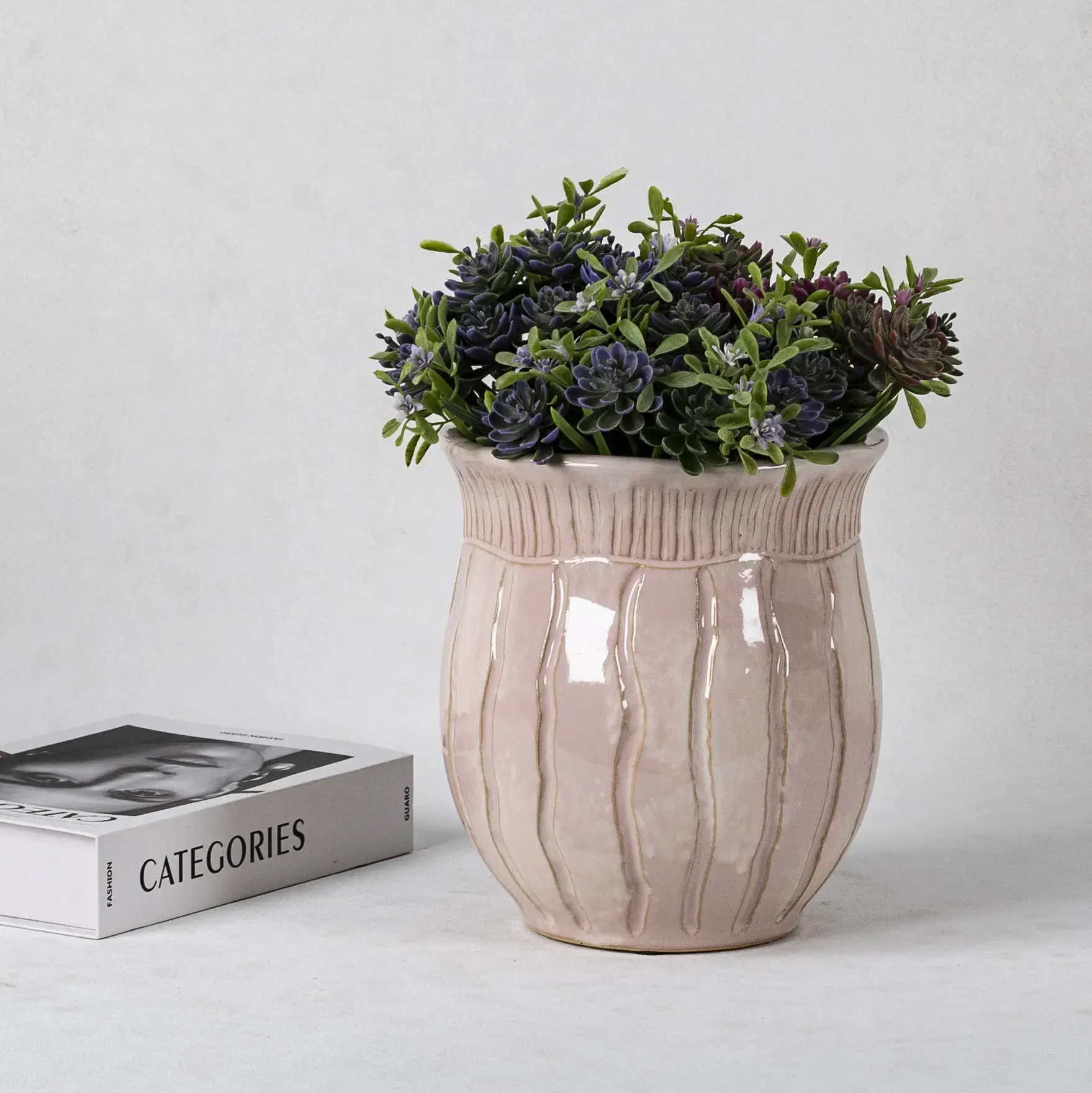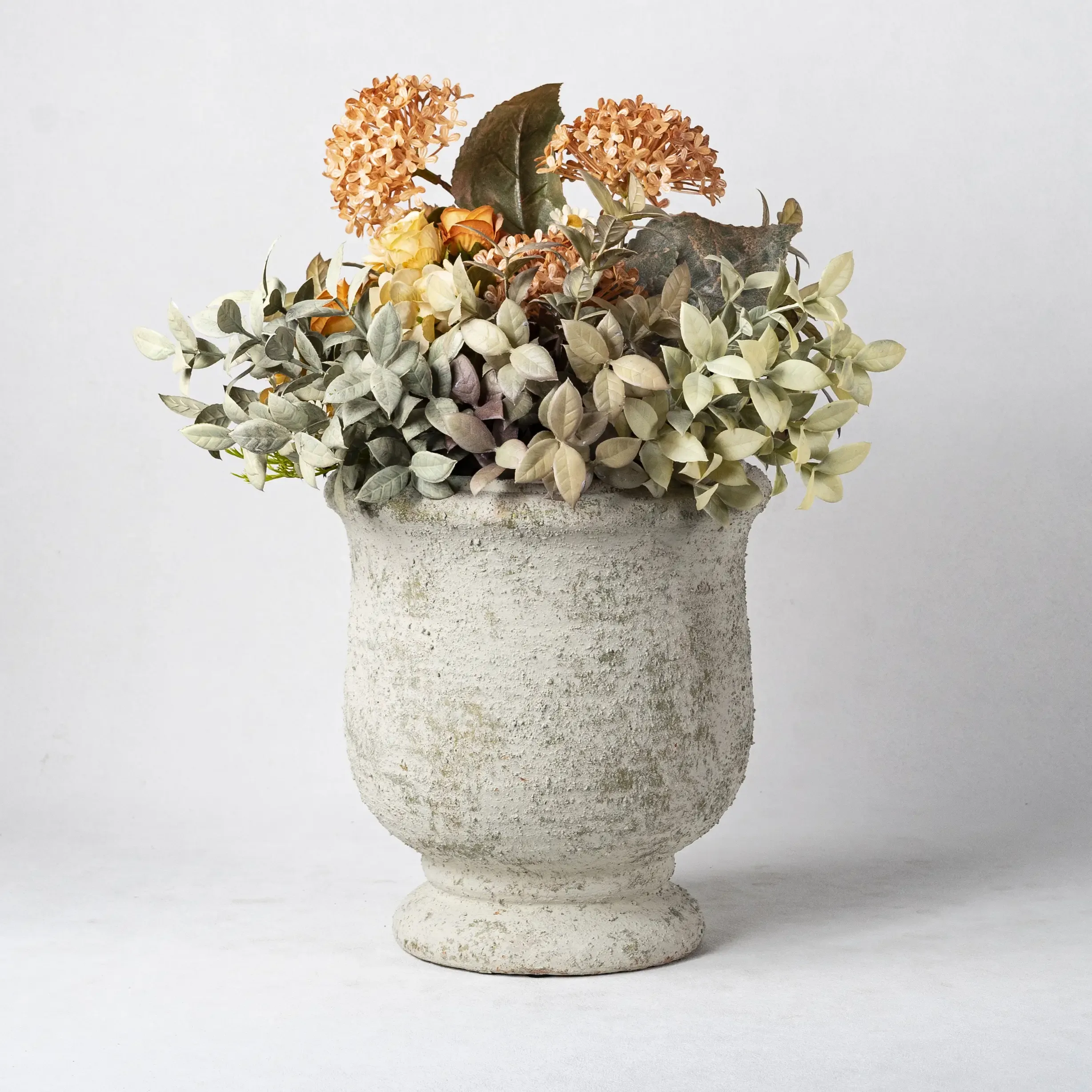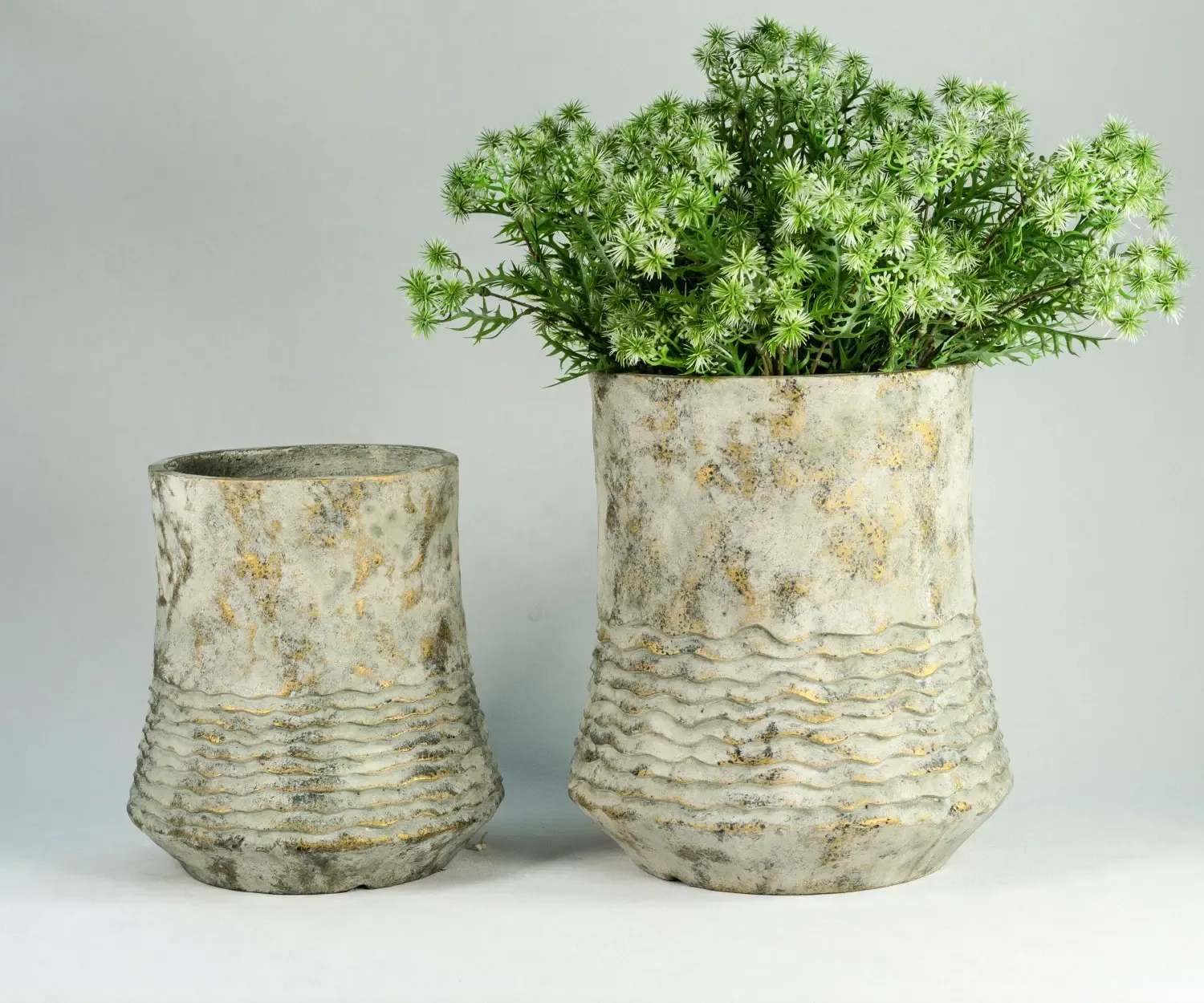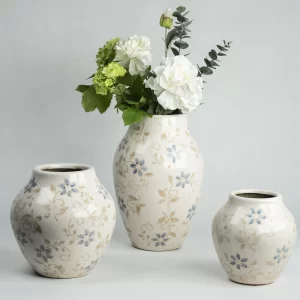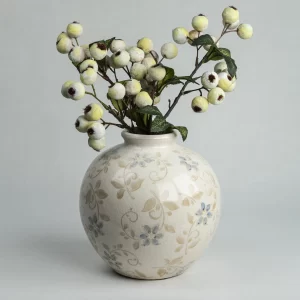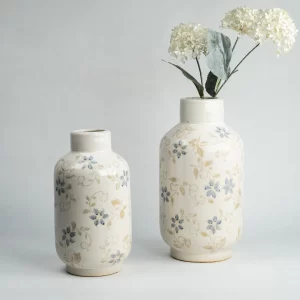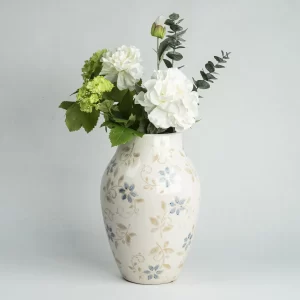Actually, different types of ceramic planters fit different types of plants. The finish of your ceramic planter — glazed or unglazed — affects water retention, root health, durability, and the look of your garden or indoor space.
This guide, delivered by Santai, a professional ceramic decor manufacturer, compares both types across performance, aesthetics, and practical use so you can pick the best pot for each plant and situation.
What “Glazed” and “Unglazed” Mean
Glazed Ceramics: During the firing process, the glaze melts and forms a glassy glaze layer on the clay surface. This layer of glaze completely seals the surface, forming a smooth, non-permeable, usually brightly colored or glossy finish.
Unglazed Pottery: Unglazed pottery jars (such as classic red pottery jars) retain the original appearance of clay after firing. They have porosity – moisture and air can pass through the tank wall. Although some unglazed pottery jars may be coated with a thin layer of protective coating, in gardening, we usually consider surfaces that truly have breathability and permeability as “unglazed”.
The influence of substrate: Whether it is glazed or unglazed ceramic flower pots, their main substrate can be different types of clay (such as porcelain clay, stoneware clay, pottery clay). These different substrates can also affect the strength and frost resistance of flower pots.
Key Performance Differences: Porosity, Watering & Root Health
Porosity & breathability
- Unglazed: porous walls allow moisture to evaporate through the pot, increasing airflow around roots and helping prevent overwatering. Great for succulents, cacti, and Mediterranean herbs that prefer drier conditions.
- Glazed: non-porous — water stays in the soil longer, which benefits moisture-loving tropicals and plants that like consistently damp soil.
Water retention & watering frequency
- Unglazed ceramic planters dry out faster; you’ll water more often.
- Glazed pots retain moisture, so reduce watering frequency for plants in these containers.
Root oxygenation
- The evaporative effect of unglazed clay creates a small amount of cooling and oxygen exchange, which can be beneficial for some species.
- For plants that need consistently moist roots (e.g., ferns, Calathea), glazed pots better maintain the required humidity.
Drainage, Liners, and Useful Tips
With any finish, drainage holes are indispensable. If you have a glazed ceramic planter with no drainage holes, you’ll risk root rot.
Ideas:
- Use liners: You can take a plastic or metal liner and put that in a glazed decorative pot so you can keep the nice look while safely draining the plant.
- Double-potting: Use the regular nursery pot and place that inside the ceramic pot for easier to get out for watering.
- Saucers & wicks: Use a saucer to catch overflow; if you’ve got a glazed pot that holds too much moisture, you can use a wick-style drainage that draws excess water down.
- Soil mix: You can modify the potting mix by adding more grit to speed drainage for unglazed pots, or more water-retentive mix for ergonomically glazed pots.
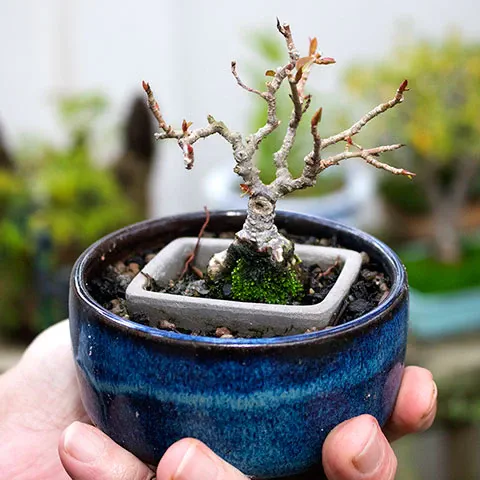
Outdoor durability & frost resistance
Unglazed, porous pots absorb water — that’s useful for plants but risky in freezing climates. Absorbed water can freeze and crack the pot (freeze–thaw damage).
Practical rules:
- Cold climates: choose vitrified stoneware or glazed ceramic planter rated for outdoor/frost use (check water absorption percentage).
- Mild climates / sheltered spots: unglazed terracotta works fine under eaves or in protected corners.
- Placement: move vulnerable unglazed pots to sheltered areas during winter, or use stand/feet to raise them off cold surfaces.
Aesthetic & Interior Use
Visual and textural choices matter for styling:
- Unglazed: earthy, matte, tactile — great for rustic, Mediterranean, and boho or organic style.
- Glazed: glass-like or satin-like finishes, bright colors and designs, — great for contemporary, eclectic, or coloristic-based projects.
Both may be used: an outer glazed shell ceramic planter with an inner unglazed liner (or vice versa) has the best of both worlds.
What Plants are Appropriate for Which Planters? (Quick check)
Succulents and cacti: Unglazed terracotta (helps dry faster).
Herbs (Rosemary, thyme): Unglazed or glazed with holes for draining.
Tropical houseplants (i.e., Monstera, Calathea): Glazed ceramic planter, or unglazed pot with liner to keep the planter moist.
Orchids: Special pots with good airflow (generally unglazed or slotted).
Large trees / outdoor-rooted shrubs: Frost-rated (or else) glazed stoneware or thick-walled unglazed stoneware, preferably in a sheltered area.
Seed planting / annuals: Glazed or lightweight liners to make watering/moving easy.
Maintenance, Cleaning & Longevity
- Mineral buildup: Unglazed pots can show white salt deposits over time; scrub with a brush and a vinegar solution if needed.
- Cleaning glazed pots: Wipe with mild soap; avoid abrasive cleaners that can scratch decorative glazes.
- Resealing: You can seal unglazed interiors with a pot sealer if you want reduced porosity (but that changes the pot’s behavior).
- When to replace: Cracks from freeze–thaw or severe chips that compromise the structure — replace. Small cosmetic chips are often repairable.
Quick Buyer’s Checklist
Before you buy your ceramic planters:
- What’s your climate? (Frost risk?)
- What’s the plant’s moisture need? (Dry vs moist)
- Does the pot have drainage holes?
- Will you use a liner or double-potting?
- Is weight/stability a concern for windy or rooftop locations?
- What aesthetic fits your space (matte vs glossy)?
Schlussfolgerung
There is no one answer: use unglazed for its breathable and rustic quality and glazed for its moisture retention and bold colors. Many gardeners benefit from a mix – unglazed for drought-tolerant plants and glazed ceramic or lined pots for moisture-loving plants or bold color.
Über Santai

Unter Santai, artistry meets precision. As a professioneller Hersteller von Keramikdekor, we blend traditional hand-painting techniques with modern automated production to achieve both individuality and scale, forming our special Großhandel Keramik Vasen. Each custom ceramic decor solution follows a carefully standardized process and a globally recognized QA system, ensuring every vase and planter delivers refined craftsmanship and lasting quality.

